The Birds Portal

Birds are a group of warm-blooded vertebrates constituting the class Aves (/ˈeɪviːz/), characterised by feathers, toothless beaked jaws, the laying of hard-shelled eggs, a high metabolic rate, a four-chambered heart, and a strong yet lightweight skeleton. Birds live worldwide and range in size from the 5.5 cm (2.2 in) bee hummingbird to the 2.8 m (9 ft 2 in) common ostrich. There are over 11,000 living species, more than half of which are passerine, or "perching" birds. Birds have wings whose development varies according to species; the only known groups without wings are the extinct moa and elephant birds. Wings, which are modified forelimbs, gave birds the ability to fly, although further evolution has led to the loss of flight in some birds, including ratites, penguins, and diverse endemic island species. The digestive and respiratory systems of birds are also uniquely adapted for flight. Some bird species of aquatic environments, particularly seabirds and some waterbirds, have further evolved for swimming. The study of birds is called ornithology.
Birds are feathered theropod dinosaurs and constitute the only known living dinosaurs. Likewise, birds are considered reptiles in the modern cladistic sense of the term, and their closest living relatives are the crocodilians. Birds are descendants of the primitive avialans (whose members include Archaeopteryx) which first appeared during the Late Jurassic. According to recent estimates, modern birds (Neornithes) evolved in the Late Cretaceous and diversified dramatically around the time of the Cretaceous–Paleogene extinction event 66 million years ago, which killed off the pterosaurs and all non-avian dinosaurs.
Many social species pass on knowledge across generations, which is considered a form of culture. Birds are social, communicating with visual signals, calls, and songs, and participating in such behaviours as cooperative breeding and hunting, flocking, and mobbing of predators. The vast majority of bird species are socially (but not necessarily sexually) monogamous, usually for one breeding season at a time, sometimes for years, and rarely for life. Other species have breeding systems that are polygynous (one male with many females) or, rarely, polyandrous (one female with many males). Birds produce offspring by laying eggs which are fertilised through sexual reproduction. They are usually laid in a nest and incubated by the parents. Most birds have an extended period of parental care after hatching.
Many species of birds are economically important as food for human consumption and raw material in manufacturing, with domesticated and undomesticated birds being important sources of eggs, meat, and feathers. Songbirds, parrots, and other species are popular as pets. Guano (bird excrement) is harvested for use as a fertiliser. Birds figure throughout human culture. About 120 to 130 species have become extinct due to human activity since the 17th century, and hundreds more before then. Human activity threatens about 1,200 bird species with extinction, though efforts are underway to protect them. Recreational birdwatching is an important part of the ecotourism industry. (Full article...)
Featured articles
Selected general bird topic
Selected taxon
Topics
Anatomy: Anatomy • Skeleton • Flight • Eggs • Feathers • Plumage
Evolution and extinction: Evolution • Archaeopteryx • Hybridisation • Late Quaternary prehistoric birds • Fossils • Taxonomy • Extinction
Behaviour: Singing • Intelligence • Migration • Reproduction • Nesting • Incubation • Brood parasites
Bird orders: Struthioniformes • Tinamiformes • Anseriformes • Accipitriformes • Galliformes • Gaviiformes • Podicipediformes • Procellariiformes • Sphenisciformes • Pelecaniformes • Ciconiiformes • Phoenicopteriformes • Falconiformes • Gruiformes • Charadriiformes • Pteroclidiformes • Columbiformes • Psittaciformes • Cuculiformes • Strigiformes • Caprimulgiformes • Apodiformes • Coraciiformes • Piciformes • Trogoniformes • Coliiformes • Passeriformes
Bird lists: Families and orders • Lists by region
Birds and humans: Ringing • Ornithology • Bird collections • Birdwatching • Birdfeeding • Conservation • Aviculture
Quotes
| “ | To a man, ornithologists are tall, slender, and bearded so that they can stand motionless for hours, imitating kindly trees, as they watch for birds. | ” |
Resources
Free online resources:
- SORA: The Searchable Online Research Archive (SORA) has decades worth of archives of the following journals: The Auk, The Condor, Journal of Field Ornithology, North American Bird Bander, Studies in Avian Biology, Pacific Coast Avifauna, and The Wilson Bulletin. Coverage ends around 2000. The ability to search all journals or browse exists on the front page.
- Notornis: The Journal of the Ornithological Society of New Zealand covers New Zealand and the South Pacific.
- New Zealand Journal of Ecology: This journal often publishes bird-related articles. Like Notornis, this journal is concerned with New Zealand and surrounding areas.
- Marine Ornithology: Published by the numerous seabird research groups, Marine Ornithology is specific and goes back many years.
- BirdLife International: The Data Zone has species accounts for every species, although threatened species and some key groups have greater detail with others only having status and evaluation.
- Author Index: This is a good source for binomial authorities for taxoboxes.
There is also Birds of North America, Cornell University's massive project collecting information on every breeding bird in the ABA area. It is available for US$40 a year.
For more sources, including printed sources, see WikiProject Birds.
WikiProjects
Selected images
Selected bird anatomy topic

The uncinate processes of the ribs are extensions of bone that project caudally from the vertical segment of each rib. (Uncinate means hooked from Latin uncinatus, from uncinus, barb, from uncus, hook.) They are found in birds (except for screamers), reptiles, and the early amphibian Ichthyostega.
These processes can serve to attach scapula muscles, and help to strengthen the rib cage overlapping with the rib behind them. They are also shown to have a role in respiration by increasing the effectiveness of muscles involved in inspiration including the appendicocostal muscles. The processes are short in walking birds and long in diving species and are of intermediate length in non-specialist birds. The screamers (Anhimidae) are unique in lacking this process. The process has also been noted in some enantiornitheans. Although among living vertebrates, bony uncinate processes are unique to birds, cartilaginous uncinate processes are present in crocodiles. The uncinate process has also been reported in Sphenodon and fossil vertebrates including Caudipteryx, oviraptorids, dromaeosaurids, Confuciusornis, Chaoyangia, and Longipteryx; however it apparently does not occur in Archaeopteryx, though Codd et al. (2007) reported uncinate processes in Archaeopteryx. (Full article...)Selected species
Did you know
- ...that sexual size dimorphism in the brown songlark is among the most pronounced in any bird, with males as much as 2.3 times heavier than females?
- ...that rufous whistler birds, unlike all other whistler birds, never forage on the ground but high up in trees or other high places?
- ...that the bill of the magpie duck (pictured) becomes green as the bird gets older, and its black crown may go completely white?
Categories
Related portals
Things you can do
Create requested articles (WikiProject Birds – Article requests):
Do these tasks:
 |
Here are some tasks awaiting attention:
|
More outstanding tasks at the project's cleanup listing, Category:Birds articles needing attention, and Wikipedia:WikiProject Birds/Todo.
Taxonomy of Aves
| Class Aves, divided into superorders, orders, suborders (where indicated), and families. | ||||
|---|---|---|---|---|
|
Associated Wikimedia
The following Wikimedia Foundation sister projects provide more on this subject:
-
 Commons
Commons
Free media repository -
 Wikibooks
Wikibooks
Free textbooks and manuals -
 Wikidata
Wikidata
Free knowledge base -
 Wikinews
Wikinews
Free-content news -
 Wikiquote
Wikiquote
Collection of quotations -
 Wikisource
Wikisource
Free-content library -
 Wikispecies
Wikispecies
Directory of species -
 Wikiversity
Wikiversity
Free learning tools -
 Wikivoyage
Wikivoyage
Free travel guide -
 Wiktionary
Wiktionary
Dictionary and thesaurus
Sources
- ^ Gaither, C.C.; Cavazos-Gaither, A.E. (2012). Gaither's Dictionary of Scientific Quotations. Springer New York. p. 1660. ISBN 978-1-4614-1114-7. Retrieved February 7, 2020.
Purge server cache

![Image 1 A pair of huia (male in front of female) Painting by J. G. Keulemans from W. L. Buller's A History of the Birds of New Zealand (1888) The huia (/ˈhuːjə, -iːə/ HOO-yə, -ee-ə; Māori: [ˈhʉiˌa]; Heteralocha acutirostris) is an extinct species of New Zealand wattlebird, endemic to the North Island of New Zealand. The last confirmed sighting of a huia was in 1907, although there was another credible sighting in 1924. It was already a rare bird before the arrival of Europeans, confined to the Ruahine, Tararua, Rimutaka and Kaimanawa mountain ranges in the south-east of the North Island. It was remarkable for its pronounced sexual dimorphism in bill shape; the female's beak was long, thin and arched downward, while the male's was short and stout, like that of a crow. Males were 45 cm (18 in) long, while females were larger at 48 cm (19 in). The sexes were otherwise similar, with orange wattles and deep metallic, bluish-black plumage with a greenish iridescence on the upper surface, especially about the head. The tail feathers were unique among New Zealand birds in having a broad white band across the tips. The birds lived in forests at both montane and lowland elevations – they are thought to have moved seasonally, living at higher elevations in summer and descending to lower elevations in winter. Huia were omnivorous and ate adult insects, grubs and spiders, as well as the fruits of a small number of native plants. Males and females used their beaks to feed in different ways: the male used his bill to chisel away at rotting wood, while the female's longer, more flexible bill was able to probe deeper areas. Even though the huia is frequently mentioned in biology and ornithology textbooks because of this striking dimorphism, not much is known about its biology; it was little studied before going extinct. (Full article...)](https://upload.wikimedia.org/wikipedia/en/d/d2/Blank.png)
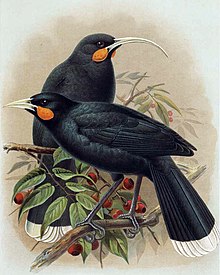
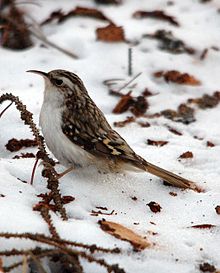


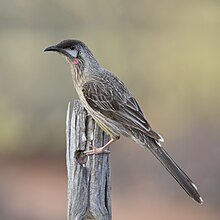
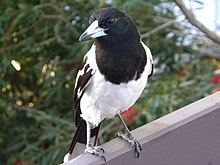
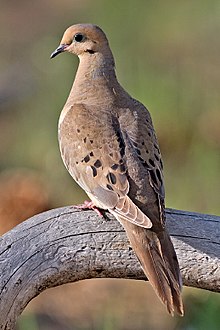


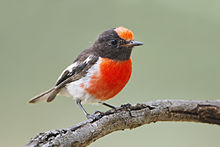

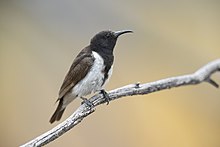


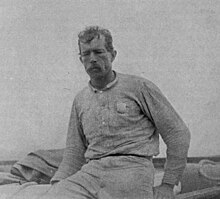
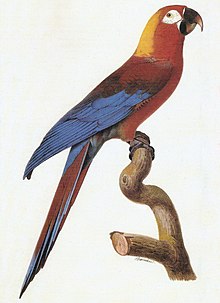



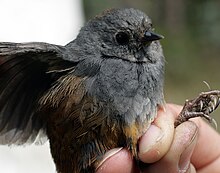
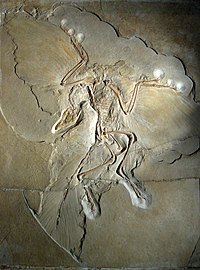






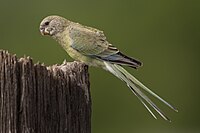









































Recent Comments